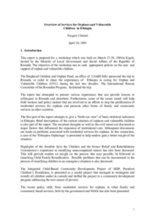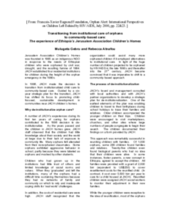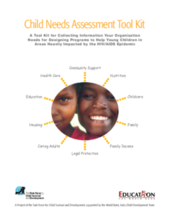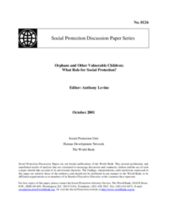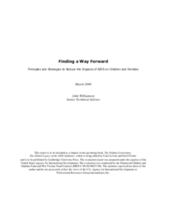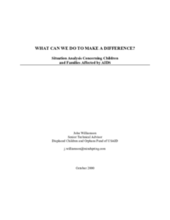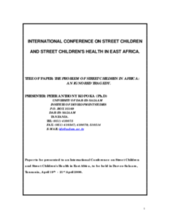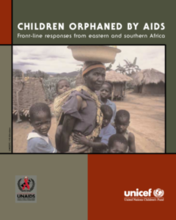Displaying 401 - 410 of 412
A report on a workshop that was presented in Rwanda that sought to share the experiences of of Ethiopia in caring for orphan and vulnerable children. The aim was to provide lessons to colleagues in Rwanda and elsewhere. The report includes statistical data, information on reunification programs, and reviews recent government and NGO policy shifts.
An account of Jerusalem Association Children’s Homes’ work involving deinstitutionalization of orphaned children in Ethiopia. The report is a summary of the steps taken by this organization to reunify/reintegrate the children into their families and society and some next steps are also mentioned.
A comprehensive tool kit providing a methodology, questionnaire and software for assessing the needs of young children affected by the HIV/AIDS epidemic. Used to help design of service programs, secure funding, and monitor and evaluate programs specifically targeting the needs of young children and their families.
A summary of comprehensive care needs for children affected by AIDS. Includes several case studies which highlight key components of comprehensive program design, implementation and evaluation.
A report recording the proceedings of a conference co-sponsored by the World Bank and World Vision. The two-day conference sought to promote awareness of OVC issues around the world, to provide practitioners with a forum to share best practices and other insights, and to probe the role of social protection in implementing a balanced response. Participants included but were not limited to: community and donor organizations, NGOs.
This report includes articles by researchers and practitioners on orphans and vulnerable children in Uganda, Ethiopia, Zambia, Malawi and India. It was prepared for the International AIDS Conference held in Durban in July 2000, and aimed to raise awareness and facilitate effective action for children affected by HIV/AIDS.
Provides a multi-level approach for the analysis and development of context-specific interventions in communities affected by HIV/AIDS epidemic. Includes discussion of microfinance services, and highlights several community-based programs.
Systematically outlines process of situation analysis with specific attention to children and families affected by AIDS. Includes reference list of example analyses and other relevant materials.
Examines initiatives taken to protect street children in Africa. Emphasis on increasing community and NGO participation in local responses.
A publication on the global emergency of the AIDS pandemic and the crisis it creates among the children left behind. In an effort to protect vulnerable children, examples of country responses from Botswana, Malawi, Zambia and Zimbabwe are highlighted. Includes recommendations for strategic action.

